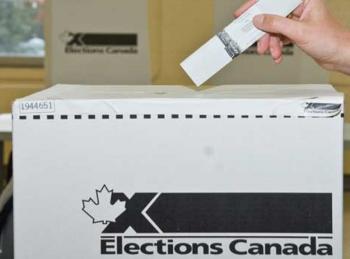By Shari Narine
Windspeaker.com Contributor
Joshua Fraser is working to build on the “banner year” of 2015 to the point that the 2019 federal election will see even more Indigenous candidates running and elected and an even higher Indigenous voter turnout.
The founder and project manager of Indigenous Politics, which includes indigpoli.blogspot.ca and other social media, is doing his part to make it happen. And, he says, even with a year-and-a-half to go until ballots are cast across the country, it’s not too soon to start rocking the Indigenous vote.
“If you engage a person to be a voter, they’re more likely to follow that pattern and keep voting,” said Fraser. “Getting them early is important.”
He points out that about the same amount of people voted Conservative in 2015 as in 2011, but it was the Liberals who “found” two million new voters in 2015, engaging millennials, first time voters, students, and Indigenous peoples.
Fraser, who is Cree, Tsuut'ina and Anishinaabe and works from Calgary, started voting at 18 years old. He has marked ballots at all levels: band, municipal, provincial and federal.
Over the course of numerous federal elections, he noticed the absence of both Indigenous issues and Indigenous candidates. He also noticed the absence of political pundits or websites tracking those same factors. He decided to correct that.
In 2015, he started tracking what could make a difference to Indigenous people and encourage them to vote. With 56 Indigenous candidates, the most in any federal election; with new Liberal leader Justin Trudeau talking about fixing the federal relationship with Indigenous peoples; with the NDP’s strong platform for Indigenous issues; with “Indigenous” being said in more federal debates than Fraser could ever remember; and with the Assembly of First Nations producing the “Closing the Gap” election document and National Chief Perry Bellegarde encouraging the First Nations vote; it created a ground swell that saw Indigenous peoples turning out in record numbers to mark ballots.
Fraser said his figures indicate an increase in Indigenous voting from the 2011 federal election from 47.4 per cent to 61.5 per cent.
A record 12 Indigenous MPs were elected, 10 Liberals and two NDPs.
“The Indigenous MPs are making themselves known in every piece of legislation, in the committees they sit on, in the House of Commons, in sponsoring private members bills,” said Fraser.
For 2019, he believes an even stronger Indigenous voter turnout could make a difference in at least 52 ridings. According to his calculations, where he compares Canadian citizens to the Indigenous population, there are 19 ridings where Indigenous people account for 20 per cent or more of the population; and 33 ridings where Indigenous people account for 10 per cent to 20 per cent of the population. There are 51 ridings where the Indigenous population marks five per cent to 10 per cent.
Fraser undertakes 90 per cent of the content that appears on indigpoli.blogspot.ca, crunching numbers and talking issues. He says he spends about 15 hours a week at it and when he doesn’t have time to do in-depth analysis, he tweets or retweets so he can “keep the energy flowing.” He contracts one or two researchers and writers.
“It’s really a project of passion,” said Fraser, who does all the work as a volunteer. He pays his bills by doing contract work in communications and marketing.
“I think it’s important that we change the narrative that Indigenous people are not engaged…. We need to bring these good stories to light.”
Fraser’s goal is to access funding that will allow him to be an “external voice and an independent voice” for Indigenous people. If that funding does come through, it would allow him to hire people to do more detailed research, election analysis, and branch out into provincial elections. Right now his focus is the federal election. He says his blog got over a million hits during the 2015 federal election.

